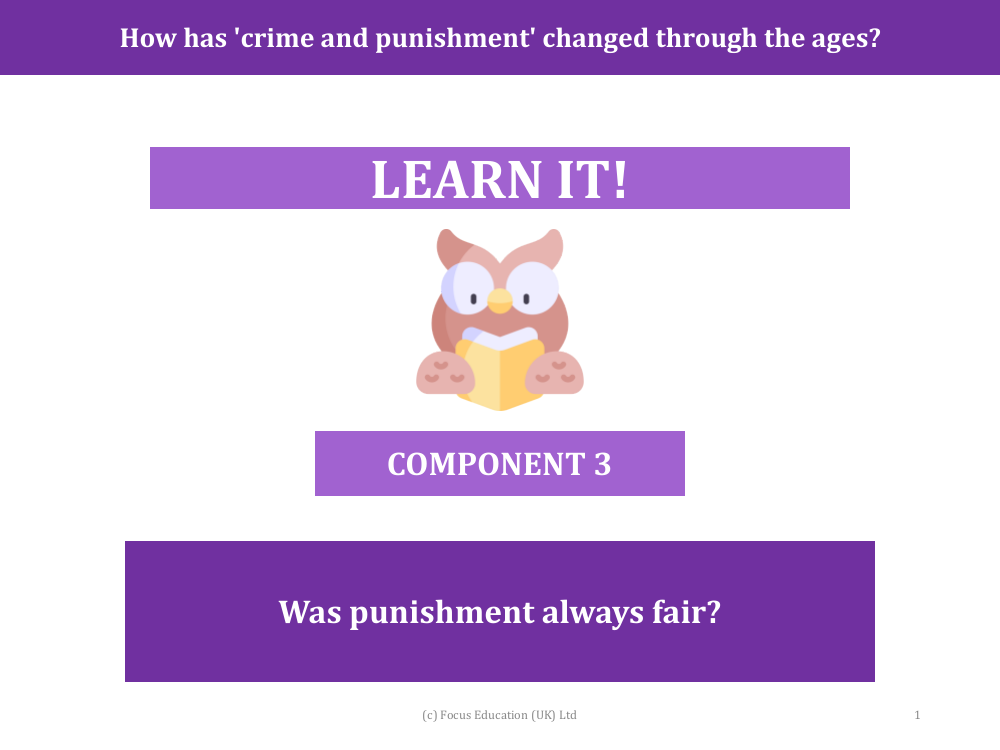Was punishment always fair? - Presentation

History Resource Description
The presentation titled "Was punishment always fair?" examines the evolution of 'crime and punishment' through different historical periods, with a particular focus on the fairness of punishments meted out for various offences. It is a concise unit that encourages pupils to delve into the harsh realities of historical justice systems. Teachers are provided with a video link to show students, which portrays the barbaric nature of some punishments in the past. The discussion that follows the video is aimed at helping pupils understand that fairness and the opportunity for the accused to defend themselves were often absent in historical 'crime and punishment' practices.
Within the presentation, a table outlines the progression of punishments for vagrants and beggars during Tudor times, demonstrating the severity and, at times, the brutality of the penalties imposed. From confinement in stocks to branding and even execution for repeat offenders, the treatment of vagrants over the years highlights the lack of fairness and the extreme measures taken against those who were often simply in difficult circumstances. The Elizabethan Poor Law is also mentioned, which introduced local taxes to support the poor and provide work, but still included harsh punishments for those refusing work. The presentation prompts pupils to consider why punishment was not always fair and to discuss the concept that punishment should be proportionate to the crime committed.




